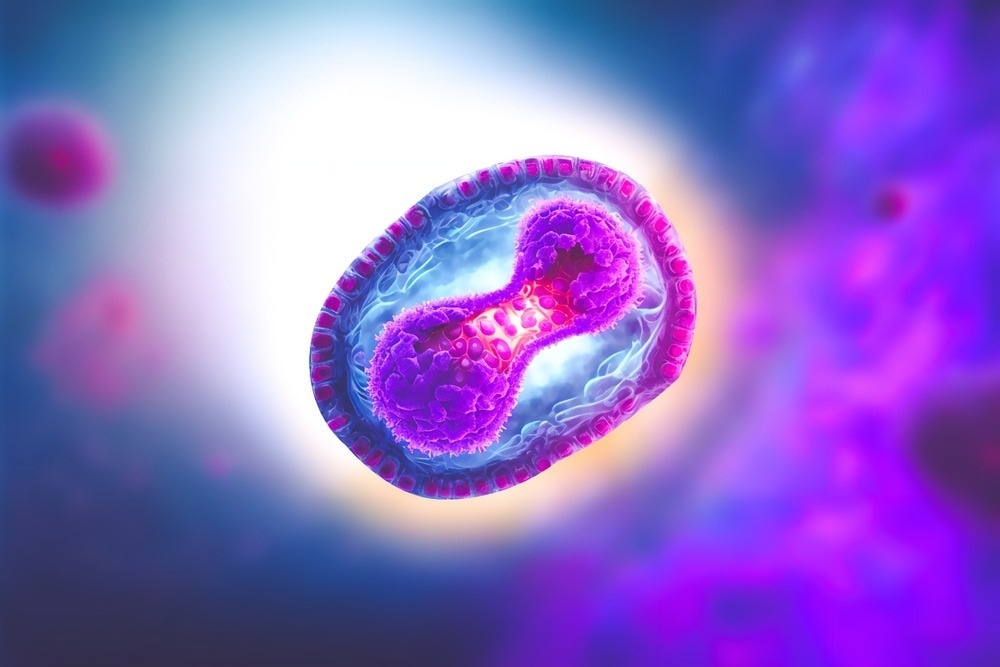In a recent study posted to the bioRxiv* preprint server, researchers investigated the main source of editing of the mpox (MPX) virus (MPXV) genome.
 Study: APOBEC3F is the main source of editing identified during the 2022 outbreak of human monkeypox virus. Image Credit: CI Photos/Shutterstock
Study: APOBEC3F is the main source of editing identified during the 2022 outbreak of human monkeypox virus. Image Credit: CI Photos/Shutterstock

 *Important notice: bioRxiv publishes preliminary scientific reports that are not peer-reviewed and, therefore, should not be regarded as conclusive, guide clinical practice/health-related behavior, or treated as established information.
*Important notice: bioRxiv publishes preliminary scientific reports that are not peer-reviewed and, therefore, should not be regarded as conclusive, guide clinical practice/health-related behavior, or treated as established information.
Background
In May 2022, a rapidly expanding MPXV (clade IIb) outbreak was reported in non-endemic nations, and within two months, declared an international population health emergency by the World Health Organization (WHO). A notable divergence in the current outbreak genomes of MPXV relative to associated viruses from the period between 2018 and 2019 period has been observed, considering the expected rate of mutations for Orthopoxvirus species.
The majority of amino acid substitutions (42 of 47) in the current MPXV outbreak genomes corresponded to C (cytidine) to T (thymine) or cytidine->thymine transitions, taking place in the context of 5′TpC (i.e., 5'GpA->ApA or 5'TpC->TpT in the opposite strand). The mutational signature is distinct but pervasive among the recently observed clade IIb MPXV genomes and, importantly, absent in MPXV genomes of the I, IIa or previously identified IIb clades.
Studies have reported that the locus of the human-origin A3 enzyme codes for six functional cytidine deaminases (A-3A, -3B, -3C, -3F, -3G, and -3H), described initially as intrinsic cell limiting factors against viral organisms through cytidine to uracil deamination in ssDNA (single-stranded deoxyribonucleic acid). The deamination events preferentially occur in the 5′TpC context, except in A3G.
About the study
In the present study, researchers investigated the prime source of editing the 2022 MPXV outbreak genome.
To evaluate the ability of A3 enzymes in editing the genomes of MPXV, HeLa (Henrietta Lacks, human epithelial cell line) cells were transfected with the six aforementioned cytidine deaminases, followed by the 2022 MPXV strain infection. The strain was produced in Vero E6 cells, and the passage 2 stock was obtained using plaque-forming assays. 3D-PCR (differential deoxyribonucleic acid denaturation polymerase chain reaction) analysis was performed for identifying and amplifying AT-enriched edited MPXV genomes and the 3D-PCR analysis products were subjected to sequencing analysis.
The dinucleotide context of edited sites was analyzed. DNA extracted from 24 MPXV-infected patients was subjected to 3D-PCR analysis. Phylogenetic analyses and multiple sequence alignment (MSA) analyses were performed. MPXV sequences available on the GenBank database as of 4 July 2022 were retrieved. Patients with the most hyper-edited MPXV sequences were analyzed in detail. Amino acid substitutions among the 2021 and 2022 MPXV outbreak lineages were analyzed.
Results
Guanine (G)>adenine (A) amino acid substitutions were detected in the context of 5’GpA, representing APOBEC3 cytosine deaminase activity. The guanine->adenine hypermutated MPXV genome could be recovered after APOBEC3 transfection followed by MPX. APOBEC3F was the only human APOBEC3 cytidine deaminase able to deaminate MPXV genomic cytidine residues extensively. Hyper-edited genomes were recovered from 42.0% of patients, indicating that editing was a part of the natural MPXV infection cycle.
Moreover, the findings showed considerable mutational repair. On selection, the corrected guanine->adenine amino acid substitutions that eluded loss of drift were involved in the evolution of the 2022 MPXV genome. A3F extensively deaminated the deoxyribonucleic acid of MPXV and sequencing analysis showed monotonous but widespread cytidine-based deaminations of the two DNA strands.
A mean guanine->adenine editing frequency of 22.0% was observed. The dinucleotide content of the edited MPXV genomic sites exhibited a strong 5’GpA-favoruing 5′ effect (5’TpC was observed in the reverse strand of DNA), characteristic of A3F.
Contrastingly, no profound 3′ or 5’CpG nucleotide context was observed, thereby eliminating the cytidine deamination/hypermethylation-associated phenomenon. In the 3D-PCR analysis, selecting the Td (temperature for denaturation) with the highest selectivity showed hypermutated sequences in 42.0% (10 of 24) of samples, and samples processed at Td>81°C did not show hyper-editing. At Td of 80°C, guanine->adenine and cytidine->thymine hyper-edited genomes were identified in patient 17 and patient 21, indicating that editing of both strands of DNA was possible. The average frequency of guanine->adenine editing for both patients was similar.
At a Td of 95°C, the frequency of hypermutation in vivo was 1.80%. In the in vivo experiments, dinucleotides related to guanine->adenine hyper-edited genomes exhibited a 5’GpA predilection (5’TpC located in the reverse strand of DNA) to a similar extent as those identified in vitro. Comparing MPXV deoxyribonucleic acid mutational frequency from patient 17 and patient 21 at the 38-targeted guanine bases with that obtained following A3F transfection showed significant positive correlations with amino acid substitution hotspots situated between the sites edited in vivo and in vitro.
MPXV amino acid substitutions observed during the 2017 to 2019 outbreaks and 2022 outbreaks were partially a result of A3F cytidine deaminase activity. The Q5 enzyme could not amplify dU-bearing DNA, and Q5 amplification recovered edited DNA in lower amounts compared to Taq polymerase, indicating that a few dU:dA pairs could undergo repair to transform into dT:dA pairs. Hyper-editing frequencies of >10-1 for each base and hypo-editing frequencies of 10-6 for each base were observed.
Conclusion
Overall, the study findings showed that transient or stochastic APOBEC3F overexpression could expose MPXV genomes to several amino acid substitutions that may represent the mutational profiles observed following multiple MPXV proliferation cycles.

 *Important notice: bioRxiv publishes preliminary scientific reports that are not peer-reviewed and, therefore, should not be regarded as conclusive, guide clinical practice/health-related behavior, or treated as established information.
*Important notice: bioRxiv publishes preliminary scientific reports that are not peer-reviewed and, therefore, should not be regarded as conclusive, guide clinical practice/health-related behavior, or treated as established information.